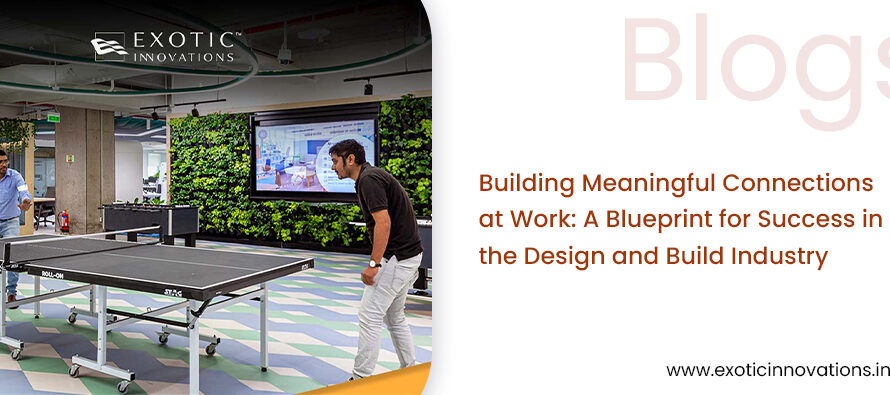Employees spend a significant portion of their day, in fact, their lives, sitting and achieving company goals at their workspace, and therefore, ergonomic design has emerged as a crucial element in fostering health, comfort, and productivity. As workplace dynamics evolve, so too do the innovations in ergonomic design, with new technologies and trends continually reshaping how we approach office environments. This blog explores the latest ergonomic trends and technologies that are enhancing comfort and support in office spaces, underscoring the importance of a thoughtfully designed workspace in promoting overall well-being.
The Evolution of Ergonomic Design
Ergonomic design, originally focused on improving physical comfort and reducing strain, has expanded to address a broader spectrum of health and productivity factors. Historically, ergonomic interventions were limited to adjustable chairs and desks. However, modern ergonomic design now encompasses a comprehensive approach, integrating advanced technologies and nuanced design principles to create work environments that support both physical and mental well-being.
Adjustable Workstations: The Cornerstone of Modern Ergonomics
One of the most significant advancements in ergonomic design is the development of adjustable workstations. Standing desks, sit-stand desks, and adjustable monitor mounts have become staples in contemporary office settings. These innovations allow employees to easily alternate between sitting and standing positions, which can reduce the risks associated with prolonged sitting, such as back pain and cardiovascular issues.
Recent trends in adjustable workstations include electric sit-stand desks, which offer smooth and effortless transitions between sitting and standing positions. These desks often come equipped with programmable presets, enabling users to save their preferred heights and switch seamlessly throughout the day. Additionally, ergonomic chairs with advanced lumbar support, adjustable armrests, and dynamic seat mechanisms complement these workstations, ensuring comprehensive support.
Ergonomic Furniture: Beyond the Chair and Desk
While adjustable desks and chairs remain central to ergonomic design, the concept has expanded to include a wide range of specialized furniture. Ergonomic accessories, such as footrests, keyboard trays, and monitor stands, play a crucial role in enhancing comfort and reducing strain. For example, an ergonomic footrest helps maintain proper posture by supporting the feet and reducing pressure on the lower back.
Recent innovations in ergonomic furniture also include modular office systems, which allow for customizable configurations that adapt to various tasks and preferences. Modular designs enable the creation of flexible workspaces that can be easily reconfigured to accommodate different functions, such as collaborative work, individual tasks, and relaxation.
Technological Advancements in Ergonomics
Technology has significantly impacted ergonomic design, with several cutting-edge innovations aimed at improving workplace comfort and efficiency. Smart desks and chairs equipped with sensors and integrated technology are leading the way in this regard. These smart-systems can monitor users’ posture, activity levels, and time spent in different positions, providing real-time feedback and recommendations for adjustments.
One notable example is the incorporation of artificial intelligence (AI) in ergonomic design. AI-powered systems can analyze users’ movements and postures to offer personalized suggestions for optimizing their workstations. Additionally, some ergonomic furniture now includes features such as built-in massage functions and temperature control, further enhancing comfort.
Ergonomic Lighting: Enhancing Visual Comfort
Lighting plays a critical role in ergonomic design, as improper lighting can contribute to eye strain, headaches, and reduced productivity. Ergonomic lighting solutions focus on providing adequate illumination that reduces glare and adjusts to the user’s needs throughout the day.
Recent trends in ergonomic lighting include adjustable LED desk lamps with color temperature control and dimming capabilities. These lamps allow users to customize their lighting environment based on their tasks and preferences, promoting visual comfort and reducing the risk of eye strain. Additionally, circadian lighting systems that mimic natural daylight patterns are being integrated into office spaces to support the body’s natural rhythms and enhance overall well-being.
Acoustic Ergonomics: Reducing Noise and Enhancing Focus
Acoustic design is another critical aspect of ergonomic innovation. Noise pollution in office environments can significantly impact concentration, stress levels, and productivity. Acoustic ergonomics focuses on minimizing noise distractions and creating a conducive environment for focused work.Recent advancements in this area include the use of sound-absorbing materials, such as acoustic panels, partitions, and ceiling tiles, which help reduce ambient noise and improve acoustic comfort. Additionally, noise-canceling technology, such as headphones with active noise cancellation, has become increasingly popular in modern workspaces, providing employees with a personal auditory environment that enhances focus and reduces stress.
Health and Wellness Integration: A Holistic Approach
Modern ergonomic design increasingly emphasizes a holistic approach to health and wellness. This includes integrating elements that support mental and emotional well-being alongside physical comfort. Features such as biophilic design elements, ergonomic wellness rooms, and access to relaxation areas are becoming more common in office environments.
Biophilic design, which incorporates natural elements such as plants and natural light into the workspace, has been shown to reduce stress and enhance mood. Ergonomic wellness rooms, equipped with features such as comfortable seating, soothing lighting, and relaxation tools, provide employees with dedicated spaces for breaks and stress relief.
The landscape of ergonomic design is continually evolving, driven by advancements in technology and a deeper understanding of the factors that contribute to health and productivity. From adjustable workstations and smart furniture to ergonomic lighting and acoustic solutions, modern innovations are transforming workspaces into environments that not only support physical comfort but also enhance overall well-being.
As businesses increasingly recognize the importance of ergonomic design, the focus will continue to shift toward creating work environments that promote health, comfort, and productivity. By staying abreast of the latest trends and technologies, organizations can ensure that their workspaces are not only functional but also conducive to the well-being of their employees.
Liked our blog? Share your opinion in the comments below!



